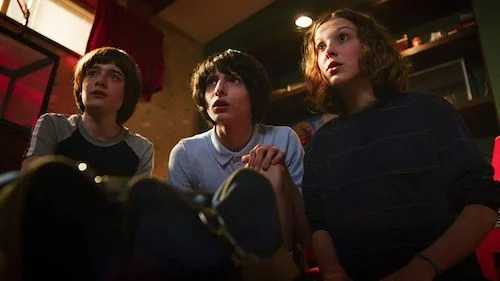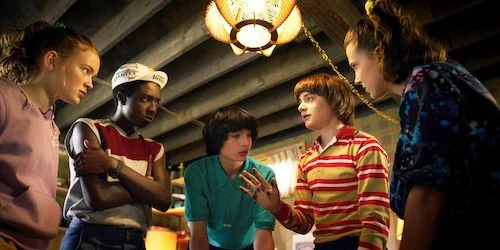Stranger Things and the Carte Blanche for Nostalgia
Obviously season 3 of Stranger Things is upon us (don’t worry: no spoilers here). The Netflix special has gotten by for years for a number of reasons (the strength of the child stars, the grit of the grown up veterans, and the Twin Peaks-esque step into the unknown), but one major play the show continues to stick with is the nostalgia plan. Easily one of the most drenched works in recent memory when it comes to how deep into the nostalgia pool it goes, Stranger Things is no stranger to this sort of thing. Many films would be beyond irritating if they went the Stranger Things route: what makes this show get by with this amount of nostalgia?
Perhaps its length is the key. See, this is obviously a show, but you wouldn’t be wrong in assuming it runs like a film. The artistic makeup is very cinematic, despite being a series. Many shows operate that way nowadays, especially with the innovation of binge watching: episodes barely exist when you turn them into one hours long blur. If a film was this cluttered with easter eggs, it would be saturated and derivative. Stranger Things gets by, because it runs for long enough to allow gaps in between the zillion references.
The kids in season 3.
What also helps is how spread out the references are. Well, not time wise, as you can count many in each episode. Spatially. Whether you notice a garment being worn, a pop culture image being shown, or a plot device being used (come on, how was Dart not a huge homage to films like E.T. even in the slightest ways? Replace Reeses Pieces with nougat bars), each easter egg is usually of a different element than the ones surrounding it. This way, you may even miss some of the details if one trope has you fixed for a few minutes.
That also demands rewatches. Even if you watch the show simply because you like it, you are bound to pick up on some new stuff each time you watch. There is, of course, the internet that can help you find these references, too, but part of the fun is the experience. Again, Stranger Things is an aesthetic experience. You can scout for all of these easter eggs, or you can live them. You may have spotted the poster for The Thing in early episodes, but that barely matters unless you experience the John Carpenter-esque plot and the body horror that went with it. The easter egg is now a feast.
The kids facing a new larger-than-life mission.
All of this plays into the science-fiction environment. You want to claim you were there when the shopping mall craze was brought back in season 3. You want to report sightings of x, y, and z ‘80s pop culture references. You want to brag to your friends, or simply just relate. These are the signs of the characters in the show reporting on alien lifeforms. Stranger Things utilizes nostalgia as a treasure trove of trivia, but it also links this idea with its own depictions of fantasy. The show is called Stranger Things and it relishes in all of the crazy ‘80s trends, for crying out loud. It truly is about the oddities that connect us, whether it be crazy encounters, electrifying music, or the biggest abominations we can muster (and by that, I mean ‘80s mullets). It’s why it survives. It’s why it has gotten many of us glued to our screens. We care about plot spoilers, but we also don’t want the experience ruined.
Andreas Babiolakis has a Masters degree in Film and Photography Preservation and Collections management from Ryerson University, as well as a Bachelors degree in Cinema Studies from York University. His favourite times of year are the Criterion Collection flash sales and the annual Toronto International Film Festival.




